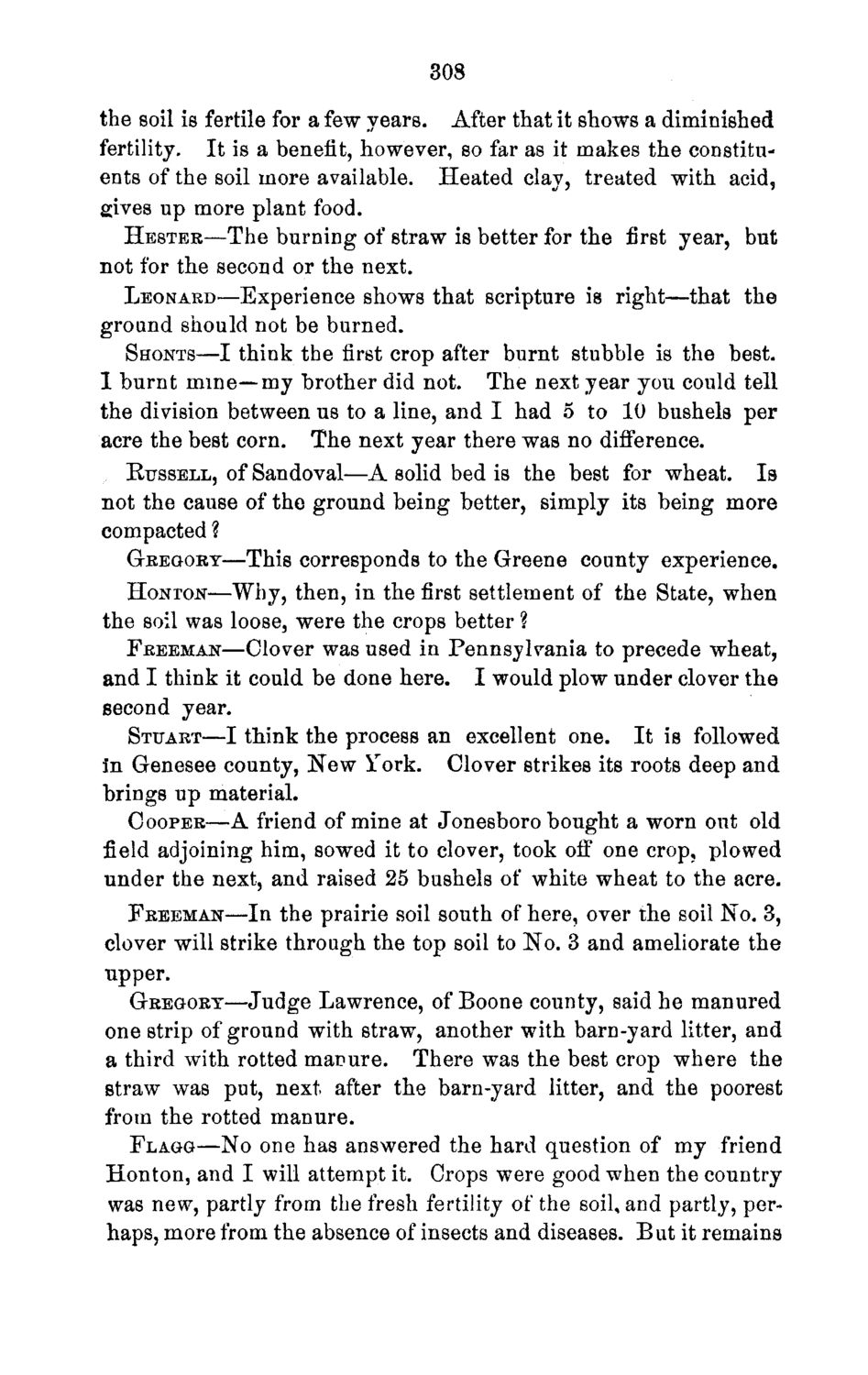| |
| |
Caption: Board of Trustees Minutes - 1870
This is a reduced-resolution page image for fast online browsing.

EXTRACTED TEXT FROM PAGE:
308 the soil is fertile for a few years. After that it shows a diminished fertility. It is a benefit, however, so far as it makes the constituents of the soil more available. Heated clay, treated with acid, gives up more plant food. HESTER—The burning of straw is better for the first year, but not for the second or the next. LEONARD—Experience shows that scripture is right—that the ground should not be burned. SHONTS—I think the first crop after burnt stubble is the best. 1 burnt mine—my brother did not. The next year you could tell the division between us to a line, and I had 5 to 10 bushels per acre the best corn. The next year there was no difference. ETJSSELL, of Sandoval—A solid bed is the best for wheat. Is not the cause of the ground being better, simply its being more compacted ? GREGORY—This corresponds to the Greene county experience. HONTON—Why, then, in the first settlement of the State, when the soil was loose, were the crops better ? FREEMAN—Clover was used in Pennsylvania to precede wheat, and I think it could be done here. I would plow under clover the second year. STUART—I think the process an excellent one. It is followed In Genesee county, New York. Clover strikes its roots deep and brings up material. COOPER—A friend of mine at Jonesboro bought a worn out old field adjoining him, sowed it to clover, took off one crop, plowed under the next, and raised 25 bushels of white wheat to the acre. FREEMAN—In the prairie soil south of here, over the soil No. 3, clover will strike through the top soil to No. 3 and ameliorate the upper. GREGORY—Judge Lawrence, of Boone county, said he manured one strip of ground with straw, another with barn-yard litter, and a third with rotted manure. There was the best crop where the straw was put, next after the barn-yard litter, and the poorest from the rotted manure. FLAGG—No one has answered the hard question of my friend Honton, and I will attempt it. Crops were good when the country was new, partly from the fresh fertility of the soil, and partly, perhaps, more from the absence of insects and diseases. But it remains
| |